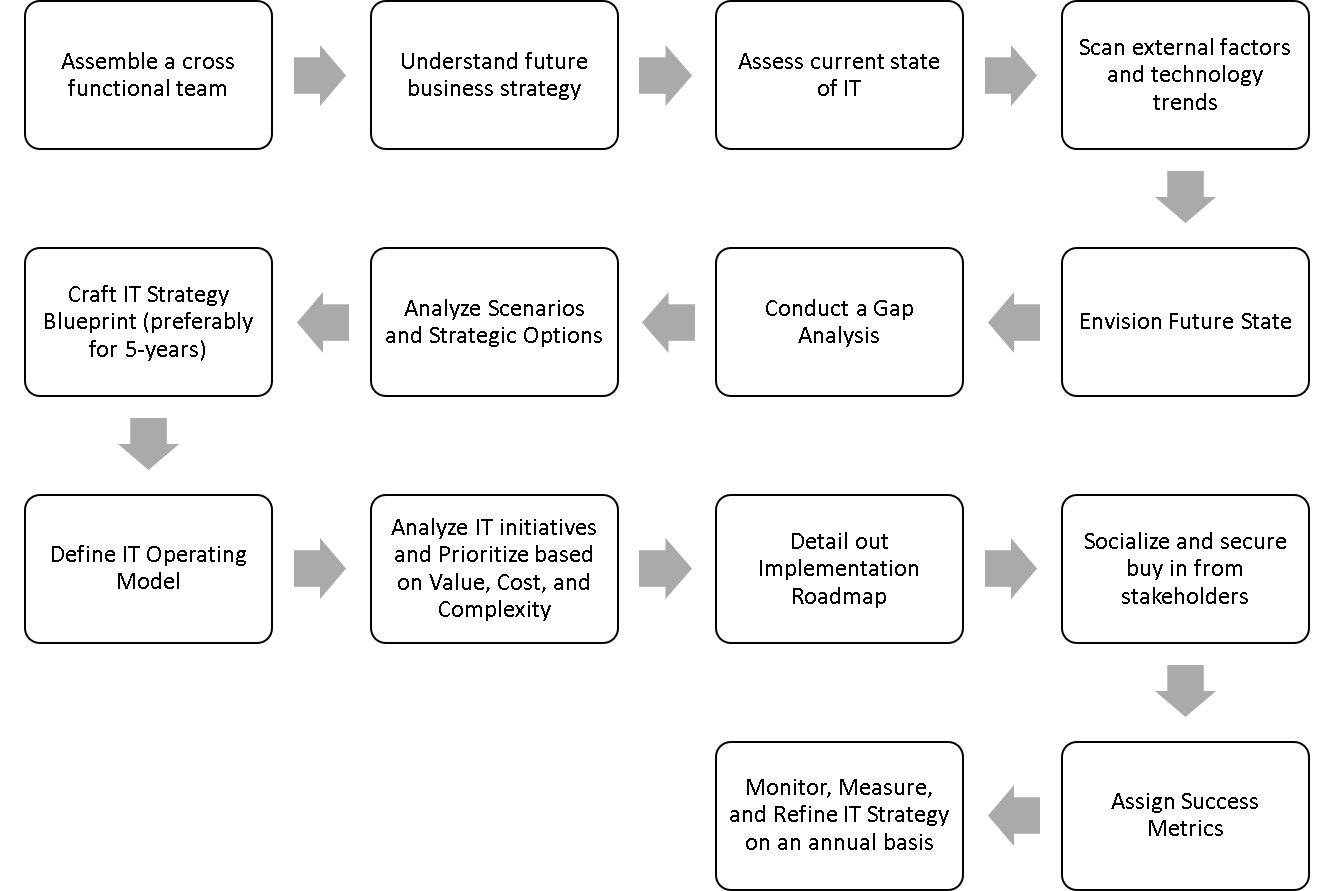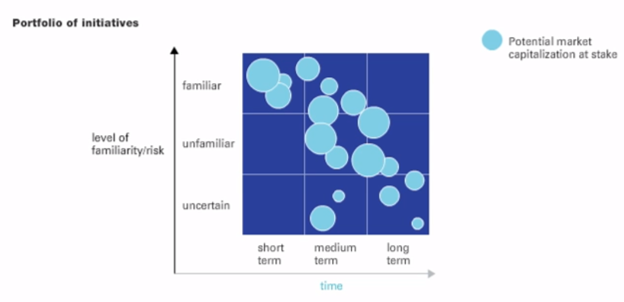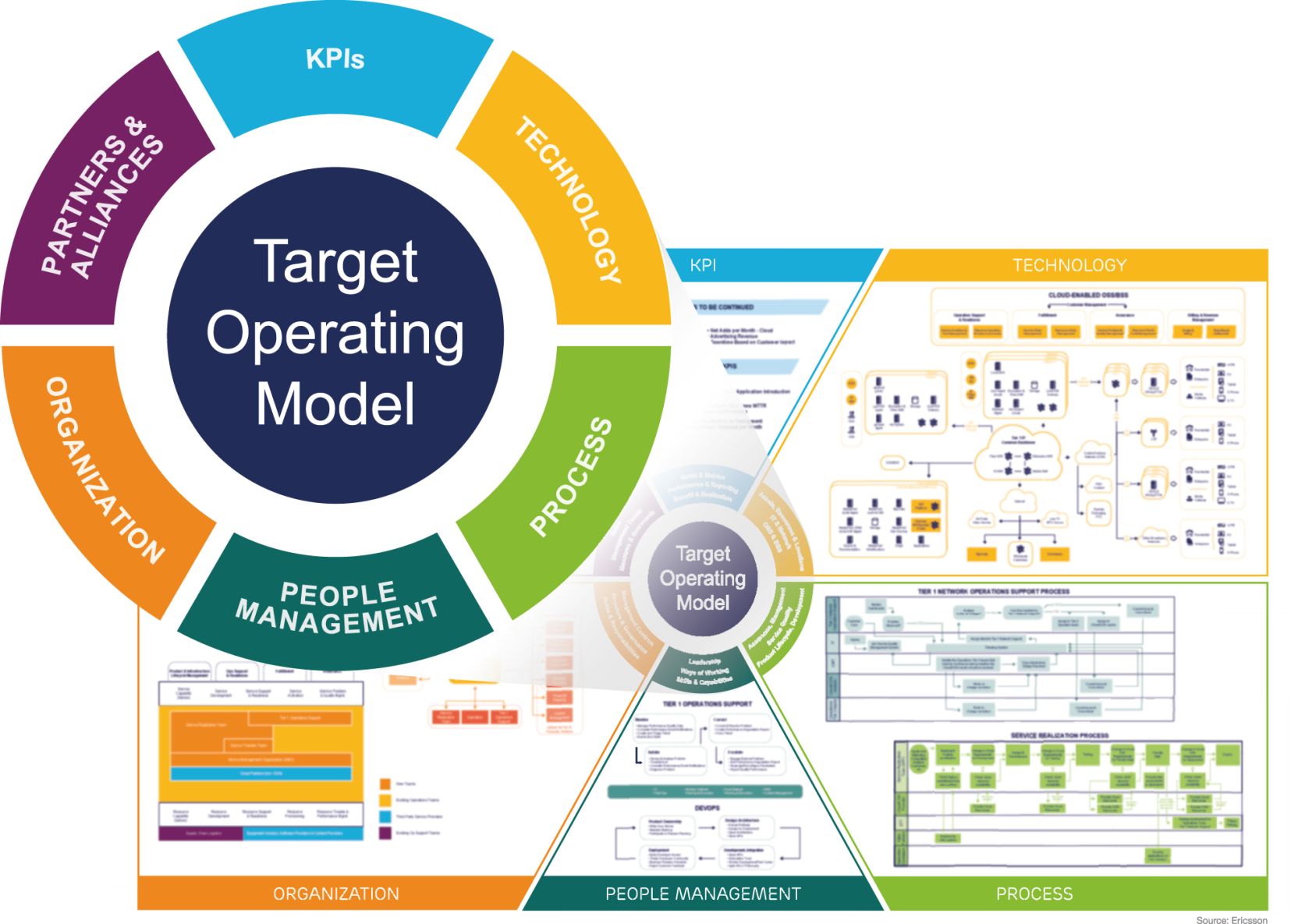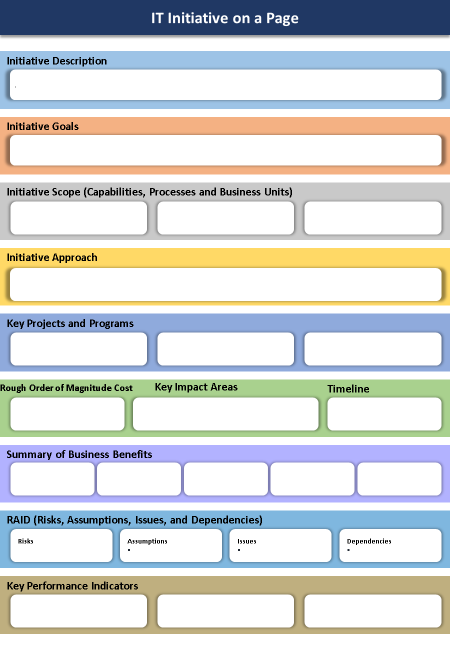IT Strategy
By: Ciopages Staff Writer
Updated on: Feb 25, 2023
The Definitive Guide to Developing an IT Strategy and Roadmap
Today every company is a technology business or at least a technology-enabled enterprise. The pervasiveness of IT across all facets of business makes it a strategic imperative for creating an effective IT Strategy (Information Technology Strategy) and Roadmap for an enterprise.
Given the criticality, creating an IT Strategy and building an IT Roadmap should be a focus area for every CIO (Chief Information Officer) and senior technology leadership.
In this definitive guide to developing an IT Strategy and Transformation Roadmap, we will dive deep into all facets of creating the IT strategy document including why an IT strategy is necessary, what an IT strategy document is, how to develop an enterprise IT strategy, and more importantly how to execute on the plan and measure success.
In most large companies, creating an IT Strategy and Roadmap is an annual ritual, and several teams and individuals allocate a significant amount of time creating pretty IT Strategy PowerPoint documents. In fact, in our experience of working with several firms in drafting IT strategy and Roadmaps, what we feel is many of the IT Strategy documents are an aspirational exercise full of highfaluting goals and strategies, most of which don’t see the light of the day. So, how do you craft an IT strategy (or technology strategy or IT Strategic Plan), in a way that is not only cohesive and compelling but also actionable? Please read on.
The Definitive Guide to Developing an IT Strategy and Implementation Roadmap – Topic Outline
How to Create an IT Strategy: The Strategy Development Process
Best Practices for building an IT Strategic Plan
What is IT Strategy?
A definition of what IT Strategy means in the enterprise context.
IT Strategy (or IT Strategic Plan or IT Transformation Strategy and Roadmap) is a comprehensive blueprint of a) how an enterprise IT team supports the business objectives and operations with optimal technology solutions and b) an operating model outlining how IT departments run its own business.
It is essential to understand the nuance of CIOPages.com definition of IT Strategy as it drives the components and contents of the IT strategic planning exercise.
For obvious reasons, information technology is an enabling force that powers how an enterprise conducts its business operations. In this role, the technology strategy is primarily an outline of how IT intends to support business goals and strategy.
The second facet of an effective IT strategy and roadmap is how the IT department operates and minds its business. For example, what type of SDLC process to use, what is the structure of the IT organization, how does enterprise architecture play a role in defining and enforcing standards, and how the IT department hires, trains, develops and manages its workforce.
In most companies developing an IT, the strategy is an annual exercise, and it consumes significant time and poses a burden on operating teams. Instead, we suggest a five year IT strategy blueprint in conjunction with an annual refresh. While five years is a long horizon in the evolution of specific technologies and their obsolescence, the IT strategy itself should have a sufficient time horizon for stability and continuity. For example, rearchitecting and re-platforming the backend transactions processing engine may be a multi-year endeavor. Or a plan to upskills IT workforce is typically not a one-year exercise.
How to Create an IT Strategy and Roadmap?
The Steps and Process of developing an IT Strategy and Execution Plan.
When companies develop IT strategic plans without a transparent process, they tend to be more of an exercise in razzle-dazzle rather than a reflection of the reality and ways to bridge the gap between current and target state. We suggest a simple but effective process to define an IT strategy and document the plan.
The IT Strategy Development Process:

Brief Summary of the Components of the IT Strategy Development Process:
- Assemble a cross-functional team: The actual strategy must be the responsibility of the CIO’s office. However, while executive involvement and leadership are essential to developing an effective information technology plan, several perspectives must be a part of the process.
The strategy development team must have representation from or at least perspectives of the following areas:
Technology Leadership: A senior IT executive who can provide the leadership viewpoint.
Enterprise Architecture: An enterprise or business architecture leader to add a structural lens to the strategy.
Data and Information: Today, data is the lifeblood of any organization, and hence, a key leader from the CDO (Chief Data Officer) organization is critical to the drafting of any technology strategy.
Application Development and Integration: Leaders in the core coding, testing, and release areas should be a part of the team to add color from the trenches.
IT Program and Project Management: Thoughts from the folks who herd the cats and keep everyone in line.
IT Methods and Practices: Whether it is DevOps, or Agile, or some other SDLC practice, the teams that work on tools, rules, best practices, and methods will add tools and a methodology perspective.
Business Stakeholders: Business stakeholders can represent the other side – the receiving side – of the equation and having their participation will help not only make the strategic plan better but enhances the buy-in.
Understand the future Business Strategy
Needless to add, IT exists to serve business (and of course, sometimes the business itself is IT), and hence technology strategy should dovetail into business goals and strategy.
Ideally, the technology teams must have representation and voice in the development of business/corporate strategy.
Irrespective, for building an actionable IT strategy, it is imperative to understand the nuances of the business strategy over the next several years. The essential elements are what are the business goals and objectives, what does the product/service portfolio look like, growth strategy and market focus, and the strategies to power the business vision and realize the goals. Ideally, a business target operating model, if one exists, will provide the breadth and depth of details necessary for the technology teams to draft the IT strategy.
Assess the current state of IT
Taking stock of the state of affairs in the technology realm is a critical step in the IT Strategic planning process. Whether it is an in-depth assessment or a cursory review will depend on the maturity of the IT department. A comprehensive evaluation may be necessary if the enterprise is embarking on a significant transformation. In a steady state, a simple review will suffice.
The common areas to address in a current state IT assessment:
- Capabilities and level of technology enablement: Ideally, if your company has defined an enterprise business capabilities map, you can leverage Level 2 or 3 to create a heatmap of the level of technology support for each capability.
- The maturity of IT processes: Here we are not discussing the business processes, but the IT processes – whether it is IT service definition, case management, and issue resolution, the SDLC (Software development lifecycle), and application portfolio rationalization. You may use a standard CMM maturity model or a derivative.
- Portfolio Analysis (Systems, Services, Platforms, and Applications): What are the state of the IT landscape and the application portfolio? An application portfolio analysis is evaluating the applications/platforms/systems on a variety of dimensions such as business value, architecture compatibility, technical health, the cost to maintain, and factors such as stability, scalability, extensibility, and interoperability.
- Methods, practices, systems, and tools: What types of tools do the IT department use? What are the methods, practices, and policies are in place? Are they impeding the intended goal? An objective analysis will reveal the chinks in the IT armor.
- Structure and IT Operating Model: The departmental structure and the operating model (which is a more extensive global set of how IT works) are a crucial enabler or disabler – depending on the impact. Is the technical team structured to meet the business objectives? Are the teams organized around a construct of “IT Product Model” or “Capability-centric” model or is it purely application/functional oriented?
- Talent and Skills: At the end of the day, it is all about people and their caliber, capacity, and commitment. A competency and skill analysis will reveal gaps, particularly as they relate to the future state.
- Infrastructure: How far along is the enterprise with regards to the march to the cloud, adoption of concepts like SAAS, PAAS, and IAAS?
- Security, Stability, and Performance: The PQRS (Performance, Quality, Reliability, Scalability) are fundamental to operating smoothly and without a solid foundation, talk about highfalutin concepts and breakthrough technologies will not resonate with the business audience.
- Governance: Governance is a delicate balancing act. Too much of it stifles progress. Too little of governance will result in compromises and shortcuts, which will come to haunt the IT team in the long-term.
Scan external factors and technology trends
What is happening in the external world has tremendous implications for any company’s technology strategy and implementation efforts.
What technologies are showing promise, beyond the initial hype cycle? For example, is RPA (robotic process automation) the right way to automate processes? Are there use cases where machine learning can add value? Does Blockchain have relevance and resonance? Are VR (Virtual Reality) and AR (Augmented Reality) appropriate for your industry?
What are the competitors doing in terms of their technology investments? In addition to any specific competitive intelligence, you may also rely on analyst reports on top agenda items on the CIOs docket and the budget allocation to various solution areas and technologies.
How are vendor products (both the horizontal and vertical solutions) evolving? Today, vendors, including the many startups, are developing innovative concepts and technologies in various facets of B2B (Business to Business) space. Keeping abreast of the vendor landscape is critical to allow the enterprise to make, buy, build, acquire type decisions.
What is the resource availability which will impact location strategy and sourcing strategy?
Today information technology workforce is younger, mobile, and global. Depending on the types of technologies, and level of expertise, enterprises need to come up location strategies that go beyond a large campus in the headquarters location.
All these external trends information is valuable in influencing and shaping the enterprise technology strategy.
Envision Future State of IT
A full-fledged future state envisioning may not be essential for an annual refresh but is a foundational endeavor for a 3-year or 5-year technology strategy blueprint.
Remember, a target state is not a linear progression from the current state. While the sequencing and progress may be incremental, the envisioning exercise needs to rethink and re-imagine the art of the possible.
To honestly think from a blue sky perspective, it is essential to unencumber our thinking and feeling to the current state. The moment we are mired in the problems of today, going beyond the myopic view of the immediate and envision a new target state is awkward. Hence, anyone who participates in the future state envisioning needs to be open-minded and imagine the future on a clean slate.
Companies conduct “Future State Envisioning Workshops” to facilitate the collective brainstorming and development of ideas. Here are a few best practices for conducting an envisioning workshop.
Future State Envisioning Workshops: Best Practices
Do’s Don’ts

Conduct a Gap Analysis
The gap analysis between the target state and the current state or the gap between the point of departure and the point of arrival provides the magnitude of the task ahead of an enterprise to achieve the goals and objectives.
The gap analysis needs to be on multiple dimensions – people, process, technology, data, and governance – to address the shortcomings holistically.
Since we are crafting an overall IT Strategy and Roadmap, the level of gap level is more at a conceptual level, rather than at a feature/function level.
A typical gap analysis is multidimensional and allows for teams to leverage the findings in the future for a deep dive.
Analyze Scenarios and Strategic Options
Of course, legacy enterprises cannot easily erase the past and start anew. So, as a part of the gap analysis, one can evaluate the strategic alternatives and solution options within the cost, complexity, and value equation will help temper the sci-fi fantasies and be pragmatic in the implementation roadmap.
It is crucial to evaluate the strategic options objectively. For example, a technique like Scenario Analysis may help visualize different scenarios and plan for various alternatives. Royal Dutch Schell pioneered the scenario analysis technique and is useful for understanding the multiple situations and implications of decisions.
Each company will need to determine the composition of its portfolio of initiatives. A classic McKinsey framework, the Portfolio of Initiatives allows you to position your efforts on a spectrum of risk and time horizon.
McKinsey Portfolio of Initiatives Framework:
 McKinsey elaborates on how to apply the Portfolio of Initiatives framework.
McKinsey elaborates on how to apply the Portfolio of Initiatives framework.
“To apply the portfolio-of-initiatives approach, companies must take three steps: undertake a disciplined search for several initiatives that provide high rewards for the risks taken; monitor the resulting portfolio rigorously, reinvesting in successes and terminating failures; and take a flexible, evolutionary approach that allows for midcourse corrections. The resulting strategy, like a conscious form of natural selection, identifies the strongest initiatives and sheds the rest. The increasing uncertainty of today’s business environment and the importance of balancing risks with rewards make the portfolio-of-initiatives framework more relevant than ever.”
Craft IT Strategy Blueprint (preferably for 5-years)
After the gap analysis and the exploration of the strategic alternative, the team formulating the technology strategy and future game plan will be in a position to draft the IT strategy pillars. These are typically 4-7 things that an enterprise IT team may embark on to achieve the set objectives and reach the point of arrival in the future.
While seven is not a magic number per se, anything more, particularly in double digits, will make it unwieldy and seem like a laundry list. It will dissipate the focus and attention.
The strategy pillars typically span the following areas. However, each company is unique in the state they are in and the quantum of transformation necessary to get to the next level.
Typical IT Strategy Pillars encompass:
- Any change in vision or mission (or definition of a new purpose)
- Embracing any emerging technologies to shift the paradigm
- A perspective of future state IT operating model
- Adoption of new Methods, Tools and Frameworks
- Re-engineering of IT Services and Processes
- Structure, Staffing strategy and skills, and competency improvements
- Vendor Strategy and Build/Buy/Outsource preferences
- Governance matters
Define IT Operating Model
Target operating model (TOM) is a blueprint of a future vision which aligns strategic priorities and the operating components. An IT operating model is a subset of an overall target operating model. The IT model defines how the information technology department will harness and support the business objectives as well as how IT runs its own “business.”
In today’s digital and cognitive world, it has become a strategic imperative to redefine what’s next and then organize to meet the needs of the target state with a sound IT operating model.
IT Operating Model: A Conceptual View

Analyze IT initiatives and Prioritize based on Value, Cost, and Complexity
At this stage of the IT Strategy, strategy meets execution, and hence, this is an important step. From an understanding of the business goals, one derives a set of IT priorities, which in turn culminate into a set of strategies and an operating model.
Now is the time to define and analyze the IT initiatives that support the path toward achieving the business and technology goals.
Each initiative should have a direct impact on each of the strategic objectives and have a measurable outcome.
It is a best practice to decompose each initiative into an IOP (Initiative on a Page). A typical initiative one-pagers includes information such as the following:
Initiative on a Page Content Outline:
 Initiative Description
Initiative Description- Initiative Goals and Objectives
- Scope
- Approach
- Key Projects and Programs
- Cost
- Impact Areas
- Timeline
- Summary of Business Benefits
- Risks, Assumptions, Issues, and Dependencies
- Key Performance Indicators
Detail out Implementation Roadmap
The implementation roadmap or strategy realization roadmap is fundamentally a way to sequence high-level initiatives to support the strategic game plan.
At this stage, these are not detailed project plans, but a path toward the North Star. A typical implementation or strategy realization roadmap comprises of initiative names, high-level cost numbers, tentative timelines, and a sequence to balance the cost, capacity, immediacy, and business value.
Socialize and secure buy-in from stakeholders
This portion of the IT Strategic Plan is all about ensuring buy-in. Typically, IT executives do roadshows to critical stakeholders and present them the game plan. After incorporating the feedback, a typical IT strategy and Implementation Roadmap is finalized.
Assign Success Metrics
So, after spending all that money, time, and effort, what does it buy us? Assigning key performance indicators and success metrics to the technology strategy will help provide accountability and transparency.
The standard metrics may span qualitative and quantitative depending on the areas. For example, if lowering attrition is a goal, then IT execs assign a percentage on how much reduction they are aspiring.
The metrics span operational, delivery, strategic, and support areas.
Monitor, Measure and Refine IT Strategy on an annual basis
Assuming you are creating a 5-year or a 3-year IT strategy, then a yearly refresh or a rolling 3-year plan will be a great way to course correct. As economy changes, technology revolution accelerates, enterprise IT Strategy cannot remain static.
Hence, a periodic refresh that accounts for changes in both external factors and internal matters is a critical success factor.
Best Practices for developing an IT Strategy and Realization Roadmap:
- Involve critical stakeholders, particularly from the business.
- Craft an IT Strategic Plan that is actionable.
- Avoid using language and terms that are not common lingua franca in the company.
- Even if you hire a consultant or consulting firm, ensure the IT strategy does not fall victim to “Not Invented Here” syndrome.
- While details may be filled out by various teams, the core strategy development must be led by CIO or his/her designees.
- Every strategy pillar must support organizational goals.
- While blue sky envisioning is necessary for future state envisioning, the implementation plan should reflect current realities and constraints.
There you have it. Now, go ahead and create your enterprise technology strategy and implementation plan. If you need help in building a compelling IT Strategy and Roadmap, please contact CIOPages.com consulting services.
Please also review the IT Strategy in the Digital Age for a conceptual overview.
Onward and Upward.